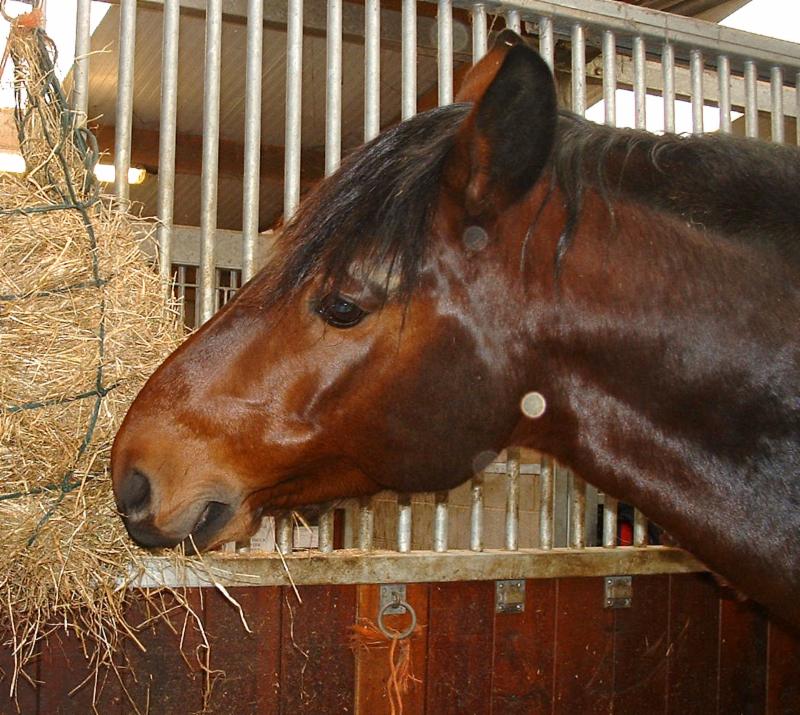Soaking or steaming hay are commonly used to reduce the respirable dust
content of hay for horses. Soaking hay is also used to wash out some of the nutrients
to help control weight and reduce the glycaemic response (the increase in blood
glucose levels that occurs after feeding.)
In a study conducted at the University of Guelph, Ontario, Canada, Tiana
Owens and her colleagues investigated the effect of soaking or steaming on
first-cut timothy – alfalfa hay. They considered the effect on nutrient content
of the hay, and on feed preference and glycaemic response in a group of Standardbred
racehorses.
The research team offered each of thirteen horses a choice between two of
these hays for 30 minutes. Blood samples were collected to monitor the
glycaemic response. The trial was repeated until each horse had been presented
with all possible combinations of hay.
The researchers found that horses consumed less soaked hay than dry or
steamed hay (all on a dry matter basis). Horses also spent less time eating
soaked hay than dry or steamed hay.
They report that soaked hay had lower concentrations of soluble
protein, non-structural carbohydrates (NSC), and potassium compared with the
same dry hay. Steamed hay did not differ significantly in nutrient content from
dry hay.
In this study, soaking, or steaming, the hay did not have any detected
effect on the glycaemic response.
For more details, see:
Nutrient content changes from steaming or soaking timothy-alfalfa hay:
effects on feed preferences and acute glycemic response in Standardbred
racehorses.
Owens T, Barnes M, Gargano V, Julien L, Mansilla WD, DeVries TJ,
McBride B, Merkies K, Shoveller AK.
J Anim Sci. (2019) pii: skz252.


